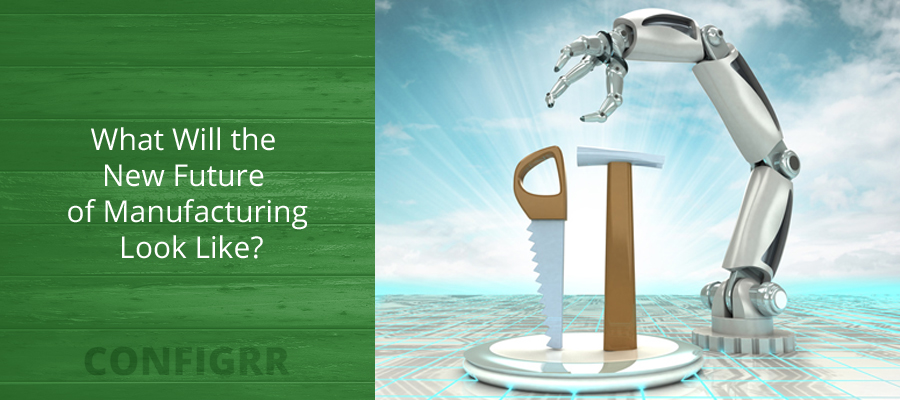Let’s take a moment and imagine what the future would look like for a wood products manufacturer.
Your customer is designing the furniture that they want on your website, choosing between different colors, styles, entering their own specific sizes and adjusting all manner of other options. Then, with the aid of their virtual reality goggles, they’ll be able to visualize the finished product in the context of their own home. Once they’re happy with the final design, they pay for the item via the virtual payment option of their choice and schedule their own delivery slot so that they can be home when it is delivered.
Meanwhile, at your factory, the order is received, payment is checked automatically and materials and resources are planned automatically. An order is sent to your suppliers for the materials and hardware and the system automatically receives notice of the date and time for fulfillment. At just the right time, all the shop instructions are sent to the back where a robot picks the material to be processed, loads the CNC router and the other automated equipment. Parts are cut and processed. Those parts that cannot be made using subtractive manufacturing methods are built on a 3D Printer. Most of the product is finished and assembled by robots. Humans are involved mostly in the design and development of new products, on the engineering and programming of the production, maybe some quality control and some finishing touches.
When the product is ready to be shipped to the customer, at the most, 3 or 4 days after the order was placed, an autonomous truck shows up at the loading dock and the product is delivered to the customer at exactly the time that was scheduled.
In this scenario, humans are not involved in doing any of the grunt work. We live in a world where vehicles are electric and drive themselves. Retail outlets, distributors, and any intermediary are absent since manufacturing and production are done in a local, distributed manufacturing factory and sales are direct and virtual.
In this not too distant future, because of robotics, virtualization, and autonomous vehicles, there are simply not be enough jobs for the whole human population. It is inevitable that as productivity goes up and scarcity of natural resources increases, the notion of never-ending growth and mass production will become obsolete.
In the face of mass unemployment and mass starvation, societies will have changed their economic models in order to avert global rebellions. Citizens receive a guaranteed living income from birth and they are free to pursue personal goals such as education, social work, culture, art, and play. Those of us that do work, chose to do so out of personal interest and ambition. Work is flexible and collaborative and will emphasize creativity and innovation.
Are you thinking: this is pure fantasy? Think again; most of what we’re talking about here is happening right now. Consumers are choosing to order online in droves, manufacturers are installing robots and automation and factories are moving to smaller shops closer to their customers. Autonomous vehicles are in the news and it’s only a matter of time before they become predominant on our streets. Guaranteed minimum income is being explored by many governments such as Canada’s, the United States and many socially progressive north European countries are close to implementation.
Does this all sound like a dream or a dystopian vision of the future? Are you working towards similar ambitions or do you feel like you’re being left behind? Things aren’t going to stay the same forever. Embrace the new revolution and make your move right now.

